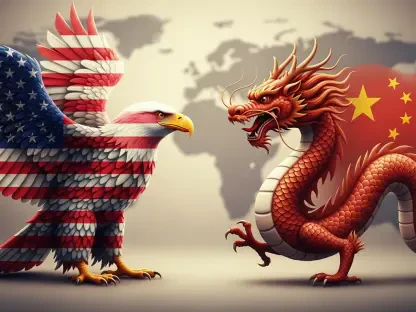The implementation of new U.S. auto tariffs has become a topic of fervent discussion, particularly given its potential to be the largest tax increase in recent history. The tariffs, projected to generate approximately $100 billion annually, even overshadow the significant tax hike introduced in 2011 for the Affordable Care Act (ACA). This shift in federal tax policy, one of the most considerable changes since 1968, also comes with expectations of additional tariffs. The Trump administration’s aggressive tariff strategy raises numerous questions about its economic and legal implications, as well as the political responses, or lack thereof, from both major parties.
Political Responses
One notable aspect of the recent auto tariffs is the seemingly muted or absent reaction from U.S. politicians across the spectrum. While the New York Times has offered extensive coverage on the matter, there is a conspicuous lack of commentary from Democratic leaders. This absence leaves many wondering about the Democrats’ stance on such an impactful policy and whether they would consider repealing these tariffs if they regained power. On the other hand, the opinions of Republican congressional members are also noticeably unhighlighted, raising questions about a consensus or divide within the party regarding this tariff-centric approach.
This political silence is intriguing, as tariffs traditionally elicit strong opinions due to their direct impact on both domestic economies and international relationships. The absence of a robust bipartisan discussion might indicate deeper political calculations. Whether these calculations pertain to aligning with perceived national economic interests or avoiding internal party disputes is unclear, but the lack of transparency certainly complicates public understanding of the issue. The electorate is consequently left to speculate on political motivations, further muddying the waters of democratic accountability.
Legal and Economic Implications
While the economic implications of these tariffs are significant, their legal foundation equally merits scrutiny. The authority to impose tariffs is constitutionally vested in Congress, yet the President’s considerable delegated powers also play a crucial role. A key point of contention lies in the recent negotiation of a new trade agreement with Canada. Despite being labeled a national security threat, Canada’s participation in these negotiations poses questions about the legal justifications behind such tariffs. This ambiguity highlights broader issues concerning the limits of governmental power and constitutional interpretations.
Historically, many functions such as eminent domain and war declarations have undergone loose and varied legal definitions. Modern interpretations and applications of such power indicate a trend towards broad executive authority, which is not without its critics. The auto tariffs serve as a contemporary example of how these powers can have far-reaching consequences, both economically and legally. These tariffs, paired with anticipated fiscal policies like an expected tax cut within the year, present a multifaceted tax landscape fraught with complexities and potential contradictions.
Future Considerations
The implementation of new U.S. auto tariffs has sparked intense debate, especially due to its potential status as the largest tax increase in recent history. These tariffs, anticipated to generate around $100 billion annually, surpass even the notable tax hike enacted in 2011 to fund the Affordable Care Act (ACA). This major shift in federal tax policy marks one of the most significant changes since 1968 and hints at the possibility of further tariffs. The Trump administration’s assertive tariff strategy prompts numerous questions regarding its economic and legal ramifications, as well as the political responses, or lack thereof, from both the Republican and Democratic parties. Critics and supporters alike are pondering how these tariffs will impact various sectors, from automotive production to consumer prices. The debate also touches on broader themes of trade, protectionism, and economic nationalism, reflecting a contemporary struggle to balance domestic interests with global economic realities.









